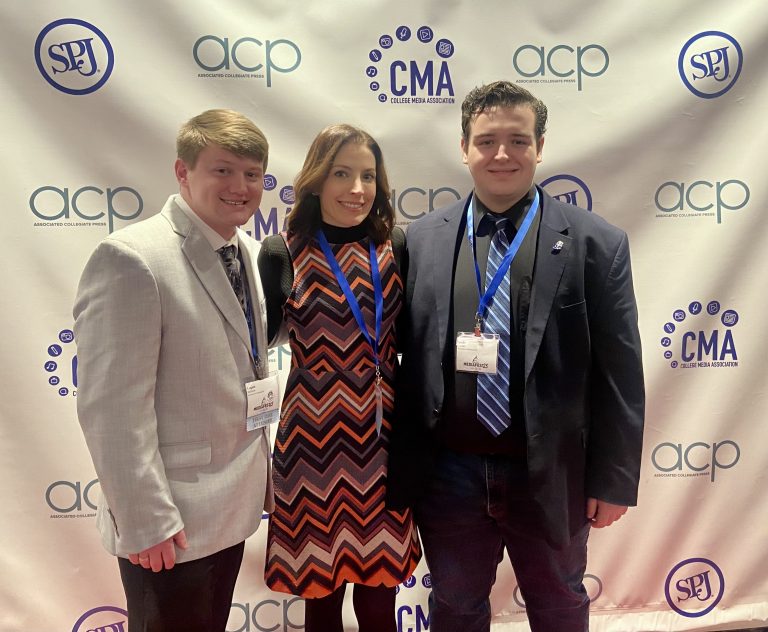
Pro by Hannah Hadley | Opinion Editor
Indiana is famously referred to as the “Crossroads of America” due to the intersection of several major highways in its capital Indianapolis. As an Indiana native and a college student living in Indianapolis, I feel the effect of many of our state’s roads being closed for construction when trying to travel. However, even though mass road construction may be inconvenient and frustrating at times, upgrading our state’s infrastructure is imperative for our citizens and economy in the long-run.
Reliable roads and bridges are necessary for safe travel. With Indiana’s crazy weather (Google “Indiana weather unpredictable” and see how many articles pop up), potholes and other flaws can easily form on roads. These hazards can make it difficult for people to travel effectively by damaging cars, causing accidents and slowing down traffic, according to Forbes. In order to keep the citizens of Indiana and its visitors safe, state infrastructure must be adequately (and sometimes frequently) updated.
It is okay to say that citizens of Indiana deserve nice roads and bridges. A survey by AAA found that, “1 in 10 drivers sustained vehicle damage significant enough to warrant a repair after hitting a pothole.” Pothole damages to cars totaled to $26.5 billion dollars, or about $600 per repair, according to AAA. And, to make matters worse, AAA found that people who had one pothole-related incident were much more likely to have another pothole-induced issue. People who use Indiana roadways every day should not have to fear for car repair bills caused by poor infrastructure like potholes and rough roads.
It is necessary to consider how Indiana road construction is also meant to increase traffic flow—A.K.A. make drivers’ time spent in their car more efficient. One initiative aiming to improve traffic flow and safety is the work on I-465 and I-69, which are interstates that are on the northeast side of Indianapolis, according to the Clear Path 465 project. Clear Path 465’s website said the roads are being rebuilt to facilitate higher speeds, implement smoother merging and decrease cars weaving in and out of traffic. Projects like Clear Path 465 are continuing all over Indiana right now, which I believe are in the hopes to help residents to have better experiences on state roads.
If visitors do not feel safe or efficient on Indiana roads, it could deter them from visiting the state—And, ultimately, deter them from contributing to Indiana’s economy. According to Visit Indiana, “Visitor spending added $8.5B to the state’s gross domestic product” in 2021 just after COVID-19 restrictions started to relax. Our state would suffer major losses to our GDP and tax revenue if tourists and visitors started avoiding Indiana due to its roads.
One may not be convinced that decreased tourism alone would hurt Indiana’s economy too badly, but there are additional economical factors that are influenced by roadways. Local businesses on streets and roads that are in disrepair may feel the struggle of decreased customer traffic (even I sometimes avoid going down certain roads in downtown Indianapolis due to the poor structure of the road, even though there may be interesting businesses there). Houses may lose value due to their proximity to poor infrastructure, such as a road full of potholes, which affects buyers and sellers. Semi trucks bringing goods to and from companies could struggle to be timely to their destinations (and, in extreme cases, semis may be damaged from bad road conditions). The list could go on.
Yes, it is time-consuming figuring out detours and navigating construction traffic. However, these frustrations are temporary. Asphalt roadways last around 18 years and concrete roads have a lifespan of about 25 years, according to engineering firm Ayres Associates. Adept infrastructure for decades is well-worth the weeks, months, and even a few years of construction.
It is also valuable to note that infrastructure is bi-partisanly recognized as an issue in the United States and in Indiana. President Biden’s (D) 2021 Bipartisan Infrastructure Law “authorizes up to $108 billion to support federal public transportation programs, including $91 billion in guaranteed funding,” according to the Federal Transit Administration. Indiana Governor Eric Holcomb (R) also has implemented an infrastructure measure. Holcomb’s 2017 “Next Level Roads” initiative allocated $60 billion to invest in Indiana’s highways, roads, and bridges. The governor’s plan also offers to pay for part of the cost of local road projects for cities, towns and counties in Indiana, which could improve nearly all of the state’s infrastructure.
Yes, it is frustrating having to slow down 30 miles per hour for construction, take a detour due to a closed road, or swerve to miss a traffic barrel. However, the frustration is temporary—If roads last 18+ years, residents will not have to deal with a road being redone in a while. In the long-run, roads and bridges in Indiana will be safer and more efficient to travel on. Therefore, the wellbeing of Indiana residents, out-of-state visitors, the state’s economy and everyone’s cars will improve.
In the meantime, plan your routes ahead of traveling, check current traffic conditions and appreciate work being done on the road. After all, we are paying for it anyways, right?
Con by Michael Harrington | Feature Editor
For as long as I have been driving, I have had to constantly deal with some type of road construction in Indiana. Whether the construction caused traffic jams, road closures or conditions which felt unsafe, it has always been rather annoying. This year, I have seen far more road construction than ever before, which has resulted in far more headaches for myself.
A majority of the construction’s focus has been on I-465, a route that I, and many others, use in our daily commutes. According to FOX 59, I-465 West was closed on July 7 and opened back on July 27. This added an additional 20 minutes to my work commute because I had to take side roads instead of the highway. The I-465 interstate is an essential route for me to take when going either to school or work, but the constant construction makes it unreliable due to the many road closures.
According to I-69 Finish Line, the construction is supposed to last until sometime in 2024. This means commuters get to look forward to more traffic congestion and lane closures for months to come—maybe even another year. I understand that the I-69 project is considered necessary by many in order to improve the condition of our road networks, but I think constant construction is more of a pain than something to be appreciative of.
Another thing that irritates me about the construction on I-465 is the deterioration of the lanes. When lanes on the highway are closed, all the cars have to line up in the few that are open. As a result of this, I had to drive on the highway when only two lanes were open earlier last month. Unfortunately, the lane that I was stuck in had a pothole in it. I could not switch lanes and ended up hitting the pothole. Because I hit it with no opportunity to slow down or swerve out of the way, I messed up the alignment of my car’s wheels. This required a costly repair that I could barely afford, further adding to the stress of my commutes.
I am not saying that road construction is a bad thing. In fact, I find the I-65 Finish Line project’s purpose necessary as many of the bridges on and around Indiana’s interstate do either need to be repaired or replaced. According to The American Road & Transportation Builders Association, a total of 32 bridges on the state’s interstate highway system (rural and urban) are structurally deficient or in need of repair. However, I do not feel the construction is efficient or convenient for drivers.
I also believe that the project’s goal to add more lanes and widen I-465 may cause more traffic, rather than solve it. According to the New York Times, adding additional lanes may only work for a short period of time. When road capacity increases by one percent, the number of cars on the road will increase by the same amount after a few years, according to the Times. Essentially, this means that the increased capacity for cars will be filled within a few years. Regarding I-465, this could mean another project once traffic fills the new lanes, likely taking users of Indiana interstates back to square-one.
I believe rather than have mass road construction throughout the interstate, a more effective way to handle traffic would be to improve our public transportation. Besides the bus system within the city, there is little public transportation, which forces people to drive to go anywhere. The I-69 Finish Line project alone costs around $1.5 billion, which does not include other road construction within the city and state. It may seem far-fetched, but think about how that money could be used to improve our bus lines or to implement other types of public transportation.
Regardless of how much the project costs or what the state transportation agency plans to work on, I am not looking forward to another year of headaches, closures, and congestion. I can only hope that construction speeds up so my commutes are less stressful to navigate than they already are.






